Erik Buell finally has his wish. After lobbying, conspiring and struggling by all possible means, he finally has his own engine. The model it powers, expected to hit showrooms late this year, is the 1125R, with 146 crankshaft horsepower, given at 9800 rpm. This is an all-new machine with the usual short, quick-turning Buell wheelbase of 54.5 inches. Individual parts may look familiar but all is new.
A pair of hefty cast-aluminum (and now made-in-USA) chassis beams confers rigidity while carrying 5.6 gallons of fuel. Stiffness also arises from solidly bolting-in the 72-degree Vee engine, which is rendered smooth enough for this by three balance shafts—two canceling primary shaking, and one zeroing the rocking couple that arises when plain-bearing rods are placed side-by-side on the crankpin, automotive fashion.
The six-speed engine is produced in Austria by Rotax, and was designed according to specific Buell criteria in order to achieve a short wheelbase and strong swingarm support. The “super banana” cast swingarm pivots in the engine/gearbox structure, building rigidity and allowing a swingarm of modern length.Front suspension is by 47mm adjustable Showa, rear by a fully adjustable Showa piggyback unit directly attaching to the swingarm. Modern experience reveals that complex linkages are unnecessary on sportbikes. The unit is mounted off-center to provide clearance for hot air exiting the cooling system.
Aerodynamics is a keyword of this design. The fairing nose is pushed far forward by the bike’s steep steering geometry of 21 degrees and 3.3 inches of trail. Below, air enters large scoops on either side of the rear edge of the front wheel, passing inward through a pair of longitudinal radiators. It then passes down the center of the machine to exit at the low-pressure area below the rider’s seat.
Low unsprung weight is one of Buell’s “Trilogy of Technology.” What it means is that the lighter the moving mass of wheels can be made, the more accurately they will track the pavement surface, providing high and consistent grip. The company claims that the single 375mm rim-mounted disc and eight-piston caliper save 6 pounds of unsprung weight as compared to a twin-disc design. Mounting the disc directly to the rim means wheel spokes support only bike weight—not braking forces. Buell, which has won my award for most acronyms, calls this brake “ZTL2,” which decodes to Zero Torque Load, 2nd design.
The 103 x 67.5mm “Helicon” engine delivers peak torque of 82 foot-pounds at 8000 rpm—claimed to be “free of dips and weak spots” and to “combine the power of a Superbike with the abundant torque characteristics of a V-Twin.” This is a dohc engine with valve drive by F-1-like finger followers from chain-driven cams. Why fingers instead of traditional inverted buckets? When the next model needs more valve lift, you have to make buckets bigger. What if there isn’t room? Fingers allow growth. Dry-sump oiling means there is no sump beneath the engine competing for that space with the black-faired underslung muffler. Oil is carried in a space on the lower left side of the crankcase.
Powerful bikes need slipper clutches to partially de-couple engine and rear wheel when a closed throttle or downshift causes the rear wheel to “drive” the engine. Buell’s “HVA” (Hydraulic Vacuum Assist) slipper uses engine vacuum to achieve this.Interactive features are hot on new vehicles, and 1125R features the ODIS—Onboard Diagnostic Information System screen. Poke the buttons and learn all kinds of useful things. Can I get stock quotes on this thing?
Drive to the rear wheel is via a Goodyear Hibrex toothed belt weighing 1.06 pound. Erik invites us to compare this with any current O-ring chain at 4-5 pounds. Another blow against CUW! (Creeping Unsprung Weight)
By now I’m sure you are bursting with curiosity about the other two items in the Buell Trilogy of Technology. Okay, the first is Mass Centralization, which means putting heavy items like engine, fuel, oil and muffler as close to the center of the bike as possible. This makes it easier to maneuver, just as the proverbial 24-pound cannon ball about-faces a lot easier than a 12-foot ladder weighing the same.
The other item is Chassis Rigidity, guaranteed by the alliance between the mighty fuel-filled chassis beams and the bolted-in engine.What have I left out? Oh, yes, the colors. Midnight Black for major surfaces, Diamond Blue for the wheels and Fusion Bronze for engine accents. There’s also a lot of other stuff about how many headlight bulbs there are, and don’t forget the LED turnsignals, integrated into the mirrors.
I’m really happy for Erik.











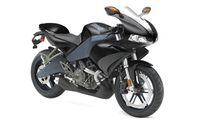
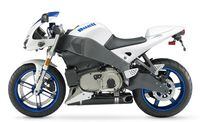

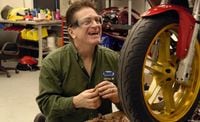
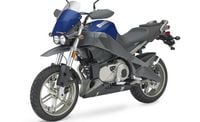
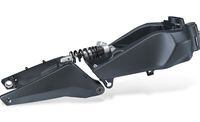

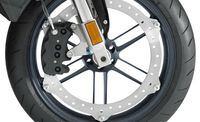
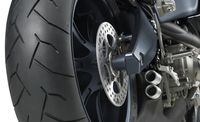
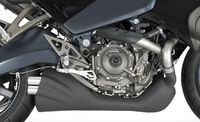
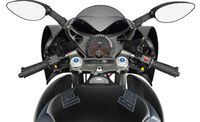
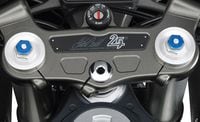
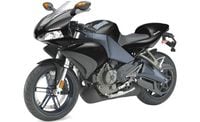
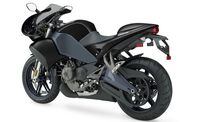
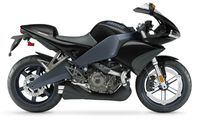
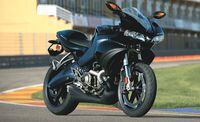

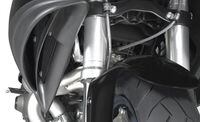
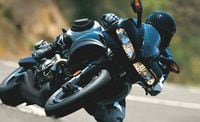
/cloudfront-us-east-1.images.arcpublishing.com/octane/QSS5DZ6SKJEU3AKE4KDAWYBEFY.jpg)
/cloudfront-us-east-1.images.arcpublishing.com/octane/SMCEQCLWRVEFTJJES6TAHB3OOQ.jpg)
/cloudfront-us-east-1.images.arcpublishing.com/octane/JCACIDCAC5FUNPTXO2BOUHGGII.jpg)
/cloudfront-us-east-1.images.arcpublishing.com/octane/DC7ZGILA2BCJXHZIUNYGV7JSEA.jpg)
/cloudfront-us-east-1.images.arcpublishing.com/octane/EWJEZUGWEZGABDEQWB64WL46GQ.jpg)
/cloudfront-us-east-1.images.arcpublishing.com/octane/5NHBMRMSFVD5JAPFNMBMNPGXQE.jpg)
/cloudfront-us-east-1.images.arcpublishing.com/octane/WHE43SCPLJBRNANAJAGXHOAIEU.jpg)
/cloudfront-us-east-1.images.arcpublishing.com/octane/6R56AQAW6NDE7BBIJ3SMCOOY5A.jpg)
/cloudfront-us-east-1.images.arcpublishing.com/octane/JMQTUE2FKZFURJTJXDMM4V47AQ.jpg)
/cloudfront-us-east-1.images.arcpublishing.com/octane/P2QYJDMQNVEANMQFXHNB3OVFKQ.jpg)
/cloudfront-us-east-1.images.arcpublishing.com/octane/VNKGXM4AA5BPRGERJOPV6GADAQ.jpg)
/cloudfront-us-east-1.images.arcpublishing.com/octane/2WS4YIFLTNG25L25WP7ZFLSWJM.jpg)
/cloudfront-us-east-1.images.arcpublishing.com/octane/UXRS6ZVQZFC23FY2EDYNT5WMVA.jpg)
/cloudfront-us-east-1.images.arcpublishing.com/octane/7JETMCKNVRGDZIGB3JCITGLPUU.jpg)
/cloudfront-us-east-1.images.arcpublishing.com/octane/OZV6E2KNIJDVHGOKXQQ2AHKLHQ.jpg)
/cloudfront-us-east-1.images.arcpublishing.com/octane/XSKMIBFZIZDN7JC6P7SMNMD3QA.jpg)
/cloudfront-us-east-1.images.arcpublishing.com/octane/ITVHWHVQ75BQBHACERYDJLPLHE.jpg)
/cloudfront-us-east-1.images.arcpublishing.com/octane/M3QRBSQ4VFEVPKYTTM3OETVFBU.jpg)
/cloudfront-us-east-1.images.arcpublishing.com/octane/H3EMT5NJ5BDZPBBH27SW3ADQH4.jpg)
/cloudfront-us-east-1.images.arcpublishing.com/octane/XTROSHDZFJB5DIJYU2VF2REFIU.jpg)
/cloudfront-us-east-1.images.arcpublishing.com/octane/7EUSM4GQEBEFTPAYZ6MOMKMMUQ.jpg)
/cloudfront-us-east-1.images.arcpublishing.com/octane/ZN44KZLHD5CHVIY3WZYAGTPGSI.jpg)
/cloudfront-us-east-1.images.arcpublishing.com/octane/5A776WXBY5GAPDYFTTUEUZNIJA.jpg)
/cloudfront-us-east-1.images.arcpublishing.com/octane/NCYHFQ2S3BAT7EC7VDN2ONGRTU.jpg)